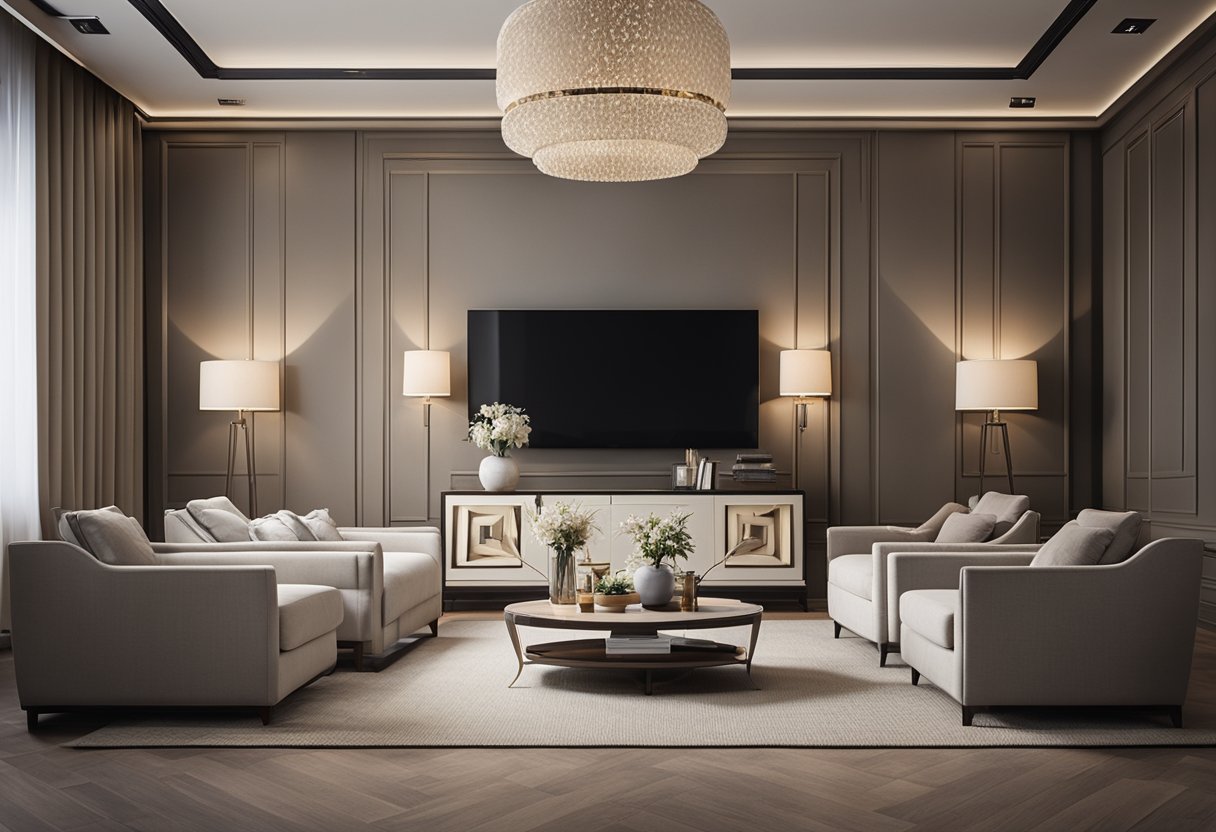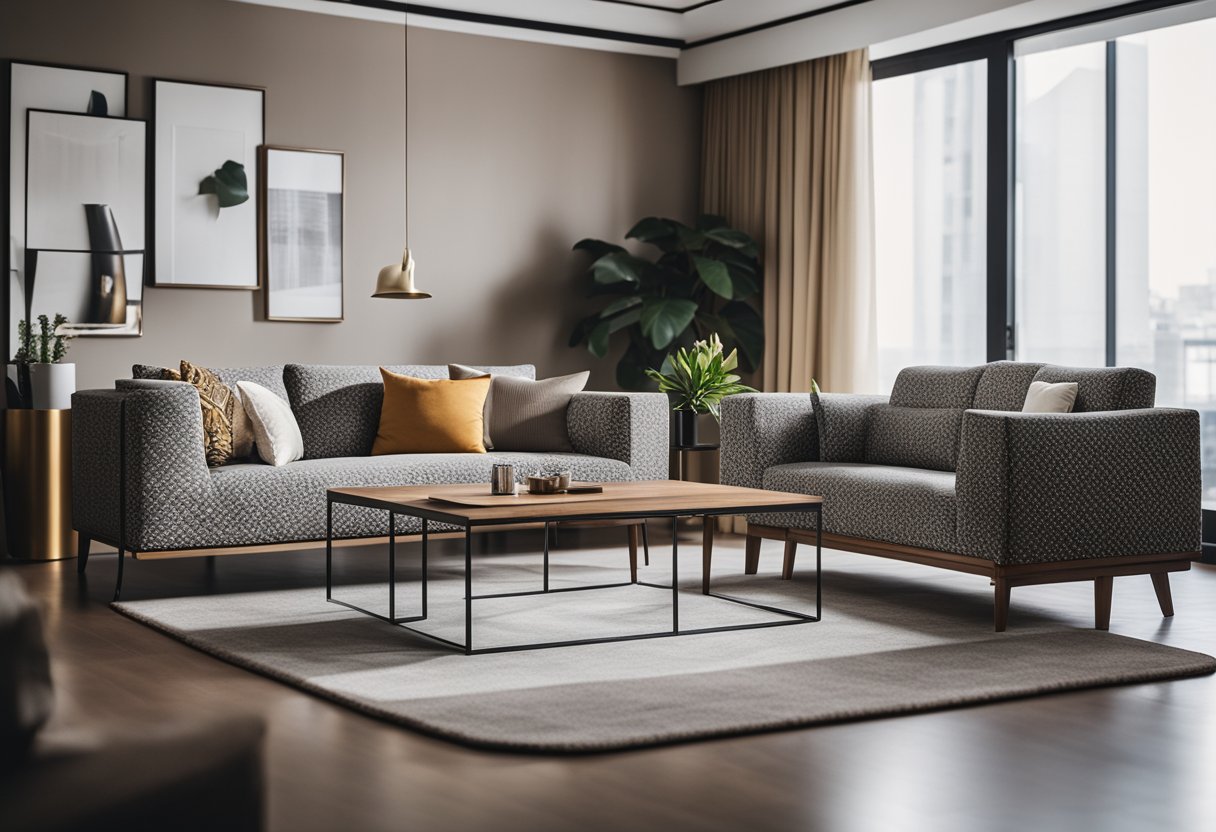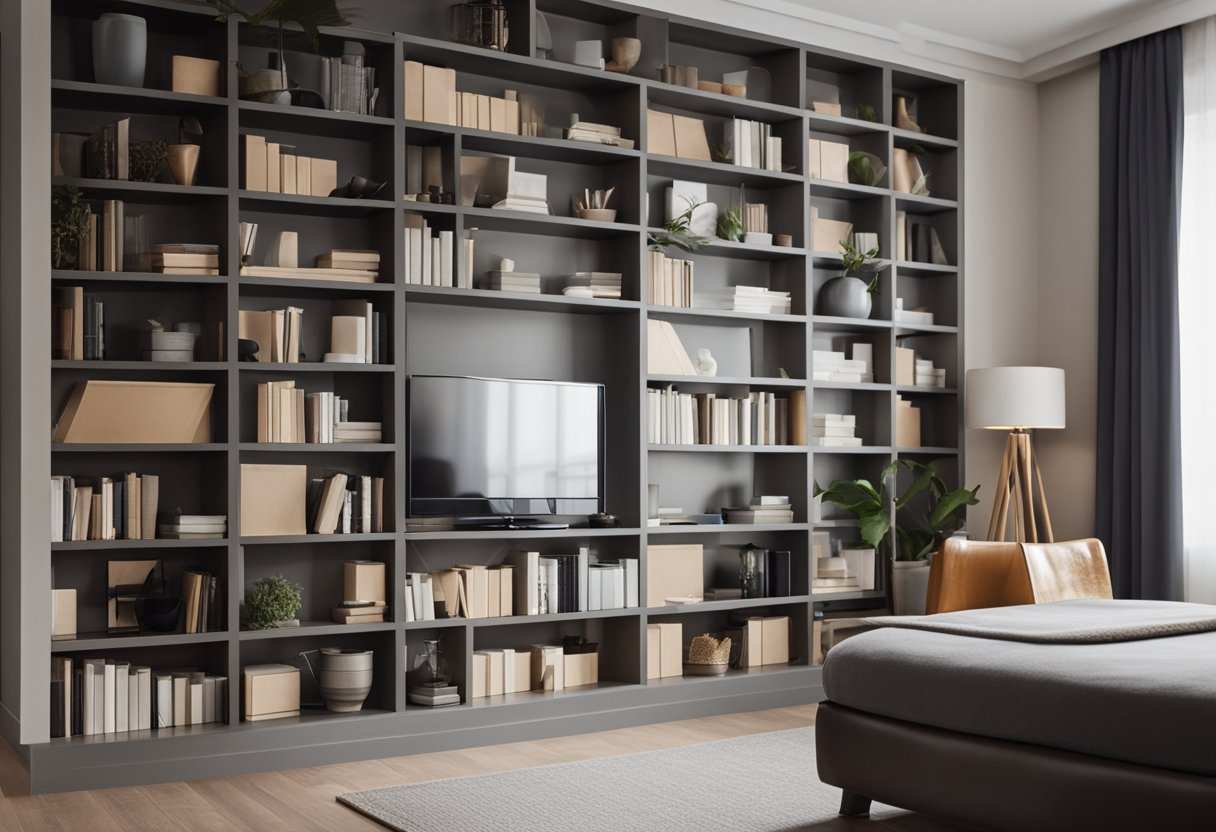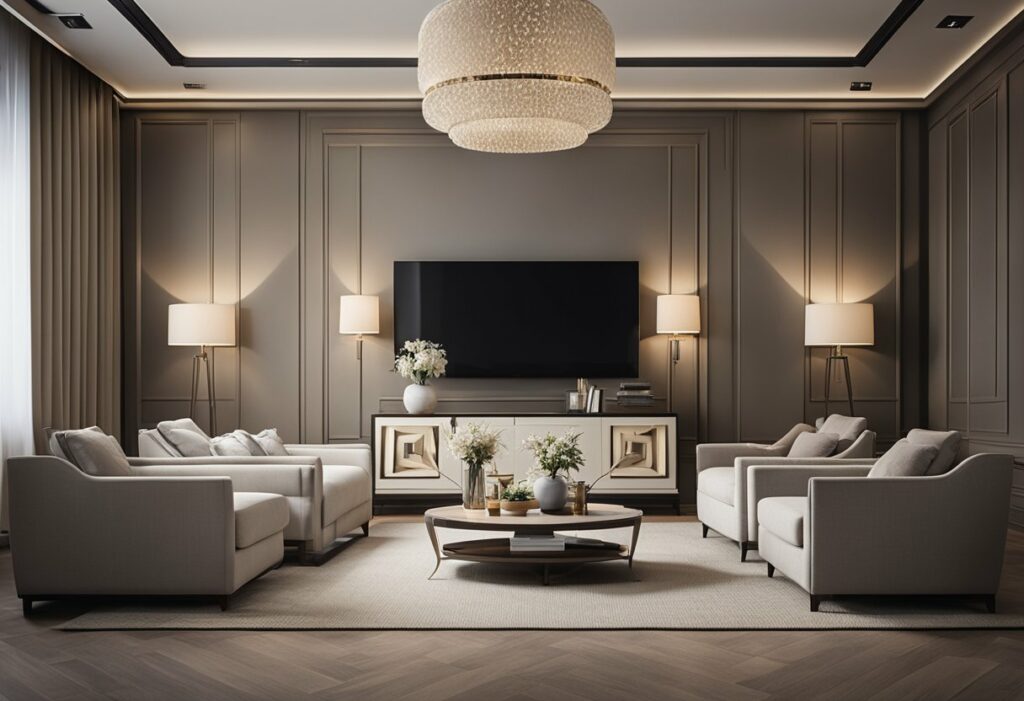Balance in Interior Design: Achieving Harmony in Your Home
Are you looking to create a space that feels harmonious and balanced? If so, you’re in the right place. Achieving balance in interior design is an essential element of creating a space that feels both comfortable and visually appealing. Balance in interior design refers to the distribution of visual weight around a room, which can be achieved through the use of colour, texture, and placement of furniture and decor.

To achieve balance in interior design, it’s important to understand the fundamentals of design. Balance is one of the key elements of design, alongside other principles such as proportion, scale, and rhythm. In interior design, there are three main types of balance: symmetrical, asymmetrical, and radial. Each of these types of balance can be used to create a sense of equilibrium in a space, depending on the desired effect.
When used effectively, balance in interior design can create a sense of harmony and contrast that makes a space feel complete. By distributing visual weight in a way that feels natural and intuitive, you can create a space that feels both comfortable and visually appealing. Whether you’re designing a living room, bedroom, or any other space, understanding the principles of balance in interior design is essential for creating a space that feels both beautiful and functional.
Key Takeaways
- Understanding the fundamentals of design is essential for achieving balance in interior design.
- There are three main types of balance in interior design: symmetrical, asymmetrical, and radial.
- Achieving balance in interior design can create a sense of harmony and contrast that makes a space feel complete.
Fundamentals of Balance in Interior Design

Creating balance in interior design is crucial for achieving a harmonious and visually pleasing space. Balance refers to the equal distribution of visual weight within a room, which can be achieved through careful consideration of a variety of elements, such as furniture placement, texture, and colour.
Understanding Symmetry and Asymmetry
Symmetry and asymmetry are two key concepts in achieving balance in interior design. Symmetrical balance involves arranging objects in a room in a mirror-image fashion, creating a sense of order and formality. Asymmetrical balance, on the other hand, involves arranging objects in a way that is not mirror-image, but still achieves a sense of balance through careful consideration of visual weight and distribution.
The Role of Visual Weight and Distribution
Visual weight refers to the perceived “heaviness” of an object within a space. Objects with more visual weight, such as large furniture pieces, dark colours, or bold patterns, will draw the eye more than lighter objects with less visual weight. Achieving balance in interior design involves distributing visual weight evenly throughout a space, creating a sense of harmony and equilibrium.
Incorporating Scale and Proportion
Scale and proportion are also important considerations in achieving balance in interior design. Furniture and decor items should be appropriately sized for the space they occupy, and should be arranged in a way that feels proportional and visually pleasing.
When considering scale and proportion, it’s important to take into account the shape, form, size, texture, light, and colour of each element in the space. Designers often use a combination of symmetrical and asymmetrical balance, as well as radial balance, which involves arranging objects around a central point, to create a sense of balance and harmony in a room.
Overall, achieving balance in interior design requires careful consideration of a variety of elements, from furniture placement to colour selection. By understanding the fundamentals of balance and incorporating them into your design process, you can create a space that feels harmonious, visually pleasing, and comfortable.
Achieving Harmony and Contrast

When it comes to interior design, achieving harmony and contrast is essential. You want to create a space that is visually interesting and pleasing to the eye. Here are some tips on how to achieve harmony and contrast in your interior design.
Mixing Textures and Materials
One way to create contrast in your interior design is by mixing textures and materials. For example, you could pair a leather sofa with a wooden coffee table. This will create a contrast between the smoothness of the leather and the roughness of the wood. You could also mix metal and stone for a similar effect.
Colour Schemes and Lighting
Colour schemes and lighting are also important when it comes to achieving harmony and contrast. You want to choose a colour palette that works well together, but also has some contrast. For example, you could pair a dark navy blue with a lighter shade of blue. This will create a contrast between the dark and light shades.
Lighting is also important for creating contrast. You could use a combination of ambient lighting and task lighting to create a contrast between light and dark areas of the room.
Strategic Placement and Focal Points
Strategic placement and focal points are also important for achieving harmony and contrast. You want to create a central focal point in the room, such as a piece of art or a statement piece of furniture.
You can then use strategic placement of accessories and decor to create contrast around the focal point. For example, you could place a brightly coloured vase next to a neutral coloured sofa. This will create a contrast between the bright colours and the neutral colours.
In conclusion, achieving harmony and contrast in your interior design is all about finding the right balance between different elements. By mixing textures and materials, choosing the right colour palette and lighting, and using strategic placement and focal points, you can create a space that is visually interesting and pleasing to the eye.
Frequently Asked Questions

How can asymmetrical balance bring dynamism to a room’s design?
Asymmetrical balance is a technique where visual weight is distributed unevenly across a space, yet the overall design remains balanced. This technique can add a sense of dynamism to a room’s design by creating a sense of movement and energy. For example, asymmetrical balance can be achieved by placing a large piece of furniture on one side of the room and balancing it with a group of smaller objects on the other side. This technique can create an interesting and visually engaging space.
Could you showcase examples where balance has been masterfully achieved in a home setting?
Certainly! One example of masterful balance in a home setting is the use of colour. When choosing colours for a room, it’s important to create a sense of harmony and balance. This can be achieved by using complementary colours or creating a monochromatic colour scheme. Another example is the use of texture. By mixing and matching different textures, you can create a sense of balance and interest in a space. For instance, pairing a rough-textured rug with a smooth leather sofa can create an eye-catching contrast that still feels balanced.
In what ways does radial balance contribute to the flow of a space?
Radial balance is a technique where objects are arranged around a central point, creating a circular or spiral pattern. This technique can contribute to the flow of a space by creating a sense of movement and direction. For example, a circular rug can draw the eye towards the centre of the room, while a spiral staircase can create a sense of upward movement. Radial balance can be particularly effective in open-plan spaces, where it can help to define different areas and create a sense of unity.
What are the principles behind achieving formal balance in a living space?
Formal balance is a technique where objects are arranged symmetrically on either side of a central axis, creating a sense of order and stability. To achieve formal balance in a living space, it’s important to create a sense of symmetry. This can be achieved by using pairs of objects, such as matching lamps or chairs, and arranging them on either side of a central point. It’s also important to pay attention to the scale and proportion of objects, to ensure that they are balanced and harmonious.
Why is establishing a focal point crucial for creating balance in interior design?
Establishing a focal point is crucial for creating balance in interior design because it helps to create a sense of hierarchy and order. A focal point is a prominent feature in a room that draws the eye and creates a sense of visual interest. By establishing a focal point, you can create a sense of balance and harmony in a space. For example, a fireplace can serve as a focal point in a living room, while a piece of art can serve as a focal point in a bedroom.
How does rhythm enhance the sense of balance within an interior environment?
Rhythm is a technique where patterns, colours, and textures are repeated throughout a space, creating a sense of harmony and continuity. By creating a sense of rhythm, you can enhance the sense of balance within an interior environment. For example, repeating a particular colour throughout a room can create a sense of unity and balance, while repeating a particular pattern can create a sense of movement and energy. Rhythm can be particularly effective in creating a sense of balance in larger spaces, where it can help to tie different areas of the room together.



